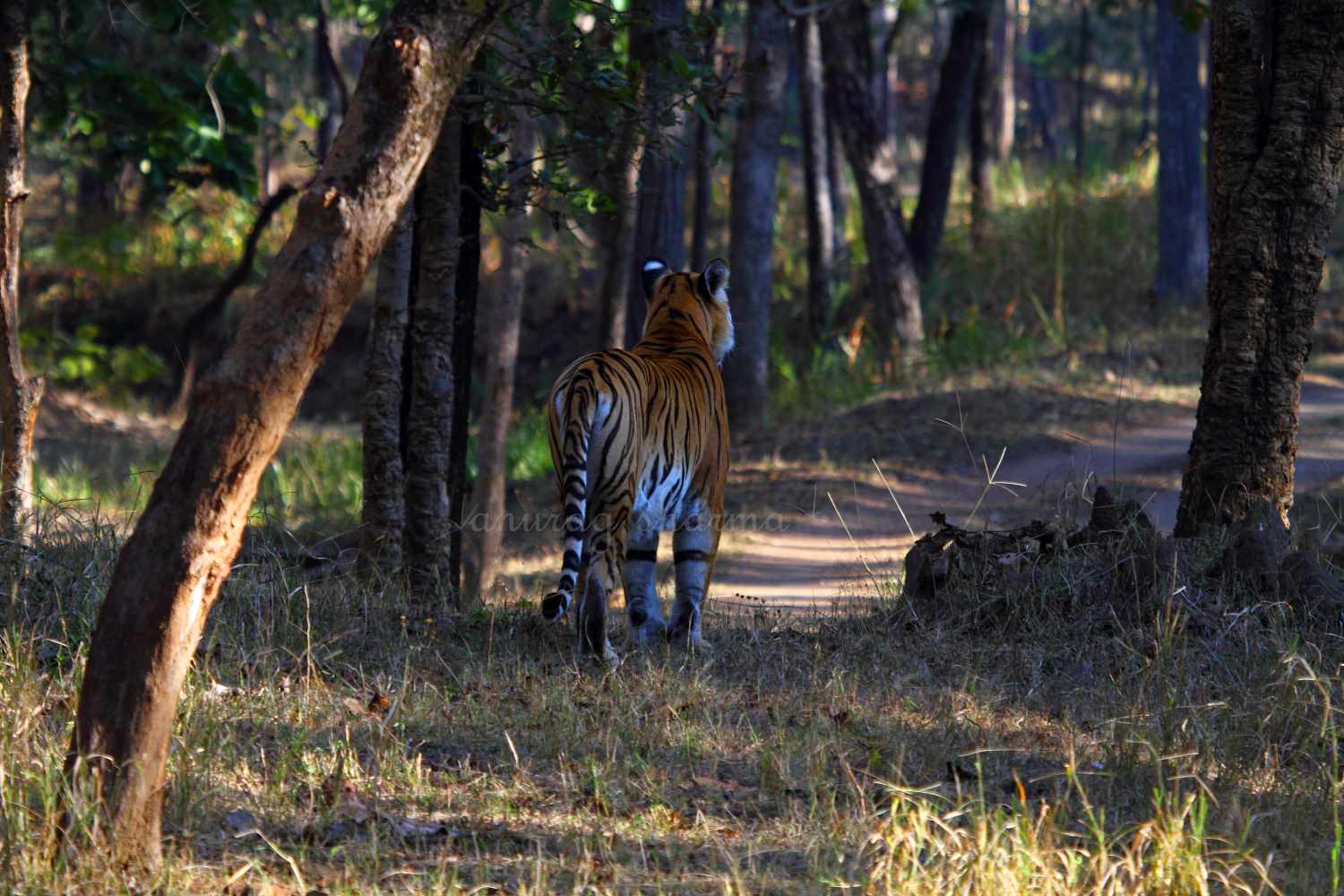The Pench National Park in the Seoni and Chhindwara districts of Madhya Pradesh provided the perfect setting for Rudyard Kipling's "The Jungle Book". The park spans 757 sq km, of which 292 sq km is the core zone, and the rest is the buffer area.
The park gained popularity when the BBC filmed four young cubs and their mother for two years using spy and log cameras. The "Spy in the Jungle" captured rare moments of animal behaviour, especially tigers, from when the cubs were just eight days old. Two female cubs have territories in the tourism zone, but the whereabouts of the male cubs are unknown.
In a country where males are considered superior, Pench National Park is clearly dominated by female tigers. Badi Maada, the matriarch of the tiger clan, Collar wali, a tigress with five cubs, and Baaghin Naala, a shy and elusive beauty rumoured to have recently given birth to a litter, control almost the entire tourism zone.
During my first trip to Pench National Park, I was excited to see the pictures of Collar wali and her five cubs walking together on the forest track. As a tiger fanatic, I eagerly imagined my picture frames filled with the "stripe parade" at Pench. The park is a typical Saal and Saagwan forest, with very little undergrowth on the ground, which increases visibility. However, some areas of the park have pockets of thick grass, which affect visibility.
The tourism zone of the park is divided into four zones, and visitors enter from one side of the park and exit from the other side. The main entry gate is Turiya Gate, named after the nearby village, and the other gate is Karmazhiri, where five vehicles are allowed every day for each safari. Morning safaris are longer than evening safaris, and the safari routes in the evening are different from those in the morning.
After failing to locate the "striped lion" during our first safari, we learned about the Tiger Show being conducted. The forest officials locate the tigers with the help of elephants, and then a "Tiger Show" is conducted for visitors where they are shown tigers on the elephant's back. While there are varying opinions on conducting tiger shows, I would refrain from giving an opinion. As we patiently waited for our turn for the Tiger Show, I saw sad faces suddenly turning happy. Having braved the early morning cold and lost all hope of seeing the king, the possibility of seeing not one but five tigers was more than one could ask for.
We saw Collar wali with her four cubs sitting in a thick grass picket with a sambhar kill during the Tiger Show. Tigress and three cubs were sleeping comfortably while one cub was feasting on the kill. The presence of elephants did not seem to bother them, and they continued to enjoy their afternoon siesta.
After this sighting, we waited for three frustrating days without any tiger sightings, not even pug marks. I remembered my friend's advice: "Pench is a very tricky forest, difficult to crack. Do not have over expectations, or you will be disappointed." Looking back, it was indeed a tricky forest, but I was not disappointed despite no tiger sightings. This was thanks to Mr Jackal or "jai call" as we fondly call them, Pench's biggest highlight for me. Pench is known for good Jackal sightings, and we had some fantastic sightings of jackals killing a chital fawn and eating it. On another occasion, we saw a jackal carrying a chital's head for more than a kilometre on a forest track.
Finally, Pench tigers decided to oblige us once again, and we saw Badi Maada and her two cubs, followed by Collar wali and her male cub crossing the forest track. Over the next few days, we managed 12 sightings of nine unique tigers of the grand Badi Maada family, including the lady herself and her current two cubs, Collar wali, her daughter from the previous litter, and her five cubs.
Despite the irregular sightings and bureaucratic set-up of the Pench forest administration, it was an overall successful trip. We also saw other animals and birds such as a pack of four dholes on the road, bison, jungle cat, Changeable Hawk Eagle with a kill, Racket Tailed Drongo, Grey Hornbill, and white-eyed buzzard. I would like to thank Camp Kohka Wilderness and its entire staff for their excellent hospitality and for making our stay comfortable. I will share the story of Pench Tigers in my next blog.


Be the first to share your thoughts!